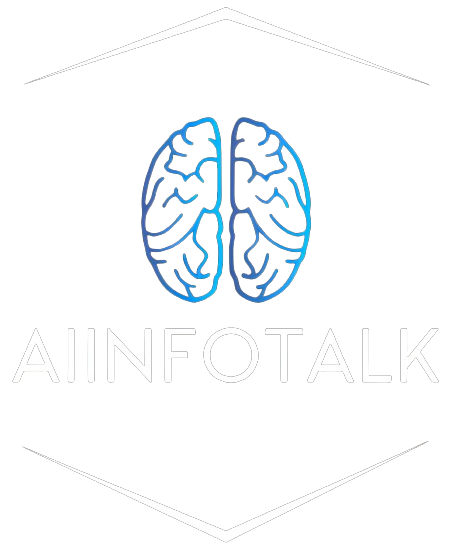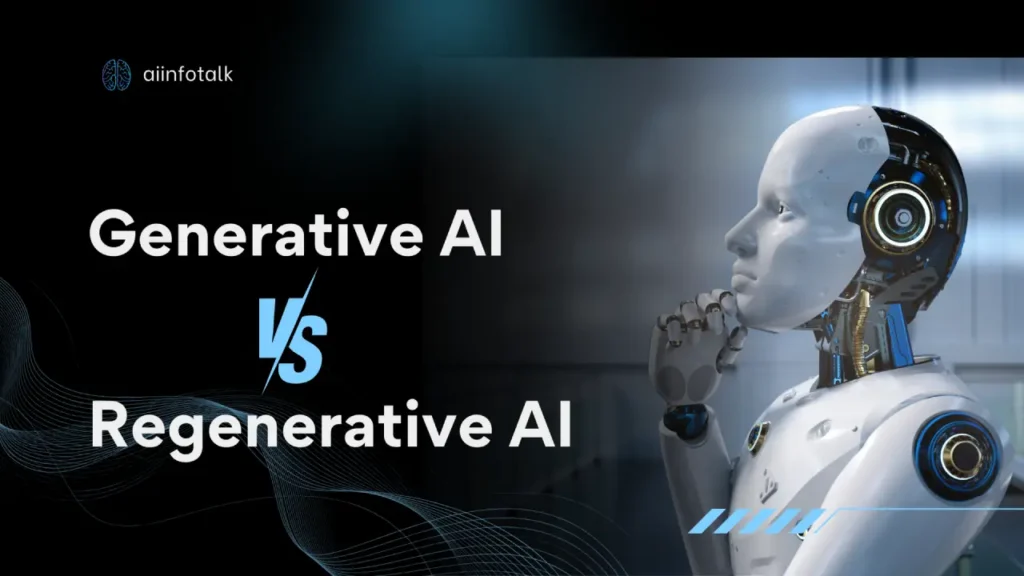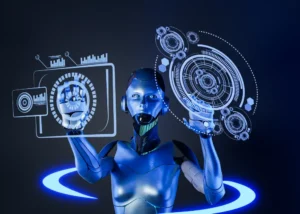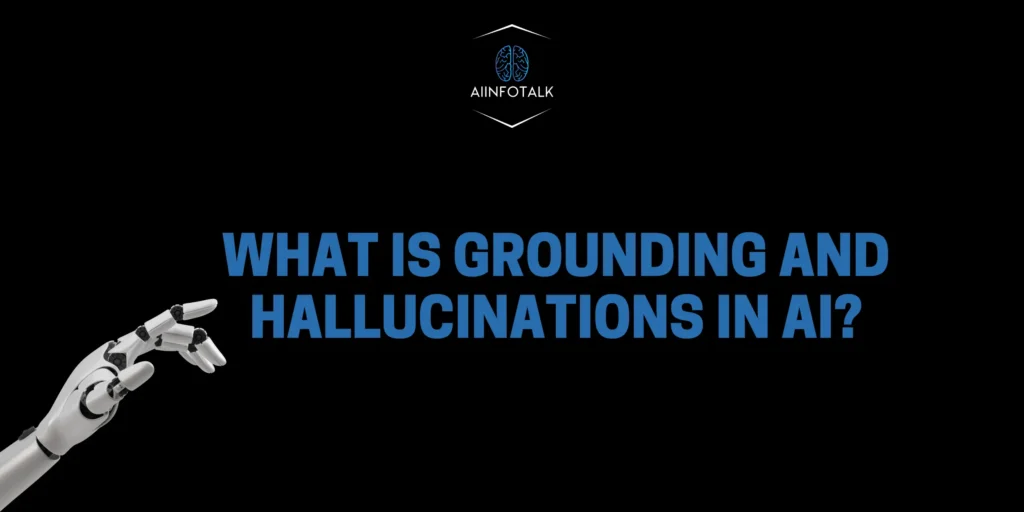Generative AI gets a lot of attention for creating new content but there is another powerful approach that many people don’t notice is Regenerative Artificial Intelligence. We will see the difference between Generative and Regenerative Artificial Intelligence, showing how Regenerative AI improves itself and what makes it different.
Defining Generative AI
Generative AI is a type of system that creates new content by learning patterns from existing data. Using generative ai tools like Generative Adversarial Networks (GANs) and Variational Autoencoders (VAEs). Generative AI can create images, music, text, and more. GANs use two neural networks: one called the generator and the other called the discriminator. Applications of generative AI are used in many areas as they work together to create content that looks like real data. The generator makes the content, while the discriminator checks if it’s real or fake. They keep improving each other until the content looks just like the real thing.
Which of the Following is a Generative AI Application?
Generative AI is everywhere, even if we don’t notice it. It creates things like text, images, music, and videos. Some popular examples of generative AI applications include:
- ChatGPT – A powerful AI chatbot that generates human like responses and assists with writing, coding, and answering questions.
- DALL·E – An AI application that turns text into realistic images. You can ask it to create anything from futuristic cities to made-up animals.
- DeepFake Technology – An AI that swaps faces in videos, make them look real. It is mostly used in entertainment and media.
- AI Music Generators – Tools like OpenAI’s Jukebox generate new songs by learning from existing music.
- Text-to-Speech AI – AI-powered voice generators like Google’s WaveNet can produce natural-sounding speech from text.
What Challenges Does Generative AI Face for Data?
-
Does Generative AI Require Large Amounts of Data?
Yes, Generative AI models need vast datasets to learn patterns and create realistic outputs. Without enough data, the quality of generated content can suffer.
-
How Does Data Bias Affect Generative AI?
The AI can produce biased or unfair results if the training data is biased. This is a major challenge in ensuring fair and ethical AI outputs.
-
What Are the Privacy Concerns in Generative AI?
Since Generative AI learns from real-world data, it can unintentionally expose sensitive information, leading to potential privacy violations.
-
Is Data Quality More Important Than Quantity?
Absolutely! Poor-quality data can lead to inaccurate or misleading AI outputs, even if the dataset is large. High-quality, well-labeled data is crucial for better performance.
-
Does Generative AI Struggle with Data Shortage?
Yes, in fields where limited data is available (like rare medical conditions), training Generative AI becomes difficult, limiting its effectiveness.
Introducing Regenerative AI
Regenerative AI is different from Generative AI because it focuses on improving itself and adapting over time. These systems learn from experience and keep improving their results over time. Inspired by how living things regenerate, regen ai improves itself over time without needing outside help. This involves mechanisms such as self-repair, dynamic learning, and environmental adaptability.
Key Differences Between Generative and Regenerative AI
-
Objective:
- Generative AI: It creates new data by learning patterns from existing ones.
- Regenerative AI: It keeps improving and fine-tuning itself through continuous learning.
-
Learning Mechanism:
- Generative AI: Learns from static datasets to produce new content.
- Regenerative AI: Engages in dynamic learning, adapting based on real-time feedback and experiences.
-
Adaptability:
- Generative AI: Limited to the scope of its training data.
- Regenerative AI: Capable of evolving its behavior in response to new situations and challenges.
Unexplored Aspects of Regenerative AI
We know the basics of regen ai, there are still many areas we haven’t explored yet.
- Self-Repair Mechanisms: Exploring how Regenerative AI can find and fix its own mistakes, similar to how the human body heals itself.
- Ethical Considerations: Looking at what happens when AI improves itself, including possible risks and the need to keep it in check.
- Real-World Applications: Looking at how regen ai can be used in real life, like in healthcare, where it could adjust to each patient’s needs over time.
Bridging the Knowledge Gap
To better understand and use Regenerative AI, we need to:
- Conduct Empirical Research: Testing Regenerative AI in real-world projects to show how it works and what benefits it brings.
- Develop Ethical Frameworks: Creating rules to make sure self-improving AI stays safe and helpful.
- Foster Interdisciplinary Collaboration: Bringing together AI experts, ethicists, and industry leaders to tackle the challenges of Regenerative AI.
Real-World Applications of Regenerative AI
1. Healthcare: Enhancing Regenerative Medicine
-
- AI-Driven Tissue Engineering: Scientists are using AI to improve tissue engineering by designing better structures for tissue growth. AI analyzes large amounts of data to recommend the best materials and designs, helping tissues heal more effectively.
- Personalized Cell Therapies: AI studies each patient’s data to predict how well stem cell treatments will work. This helps create personalized treatments and improves results in regenerative medicine.
2. Environmental Sustainability: AI in Agriculture
-
- Disease Detection in Crops: Farmers use AI to spot plant diseases early. They upload pictures of sick plants, and the AI tells them what’s wrong and suggests natural treatments, blending technology with traditional farming.
- Optimizing Resource Use: AI studies soil and weather to suggest the best times for watering and fertilizing, helping farmers save resources and farm sustainably.
3. Industrial Manufacturing: Adaptive Systems
-
- Predictive Maintenance: Manufacturers use AI to keep an eye on machines and predict problems before they happen. This helps prevent breakdowns and makes machines last longer.
- Process Optimization: AI constantly checks production data to find problems and make real-time adjustments, helping things run more smoothly and efficiently.
Empirical Evidence Supporting Regenerative AI
A study in the International Journal of Science, Engineering, and Technology looked at how a Regenerative AI system could work. It found that when AI follows ethical guidelines and focuses on sustainability, it uses much less energy, making AI more eco-friendly.
Technical Architectures of Regenerative AI
Regenerative AI is built to learn and adapt, just like living things. To do this, it needs a special setup with important parts working together.
Neural Cellular Automata (NCA):
-
- Structure: NCAs are made up of small grids of cells, where each cell has a tiny neural network that decides its state by looking at the cells around it.
- Function: This design helps the system handle complex tasks and rebuild patterns, similar to how living tissues heal. For example, NCAs have been used in soft robots, helping them fix themselves and keep working after damage.
Self-Constructive Architectures:
- Structure: These systems learn step by step by creating internal models, like predicting outcomes, figuring out how to reverse actions, and setting goals.
- Function: This helps AI grow on its own, try new things, and fix itself, so it can adjust and improve when facing new challenges.
Algorithms Driving Regenerative AI
Regenerative AI can keep learning and improving on its own, thanks to smart algorithms designed for continuous growth.
Reinforcement Learning (RL):
-
- Mechanism: Reinforcement learning (RL) helps AI learn the best actions by trying different things, getting feedback, and improving over time to earn the most rewards.
- Application: In Regenerative AI, reinforcement learning (RL) helps improve decision-making, allowing the system to adjust its strategies based on its surroundings.
Genetic Algorithms (GA):
-
- Mechanism: Genetic algorithms (GAs) work like natural selection, improving solutions over time by choosing the best options, mixing them, and making small changes.
- Application: Genetic algorithms (GAs) help fine-tune AI by improving neural networks, making them stronger and more flexible over time.
Frameworks Supporting Regenerative AI Development
Building Regenerative AI needs strong systems that support complex designs and smart algorithms.
TensorFlow and PyTorch:
-
- Features: These free deep learning tools provide everything needed to build and train neural networks.
- Usage: They help create flexible AI models that can grow and improve on their own, which is essential for Regenerative AI.
OpenAI Gym and Unity ML-Agents:
-
- Features: These platforms offer spaces to build and test reinforcement learning algorithms.
- Usage: They let AI practice complex tasks in a safe environment, helping it learn and adapt over time.
Challenges and Future Directions
Source: FINJA
Regenerative AI has a lot of potential, but there are still some challenges to overcome.
- Scalability: A big challenge is making sure self-improving AI can grow without losing speed or efficiency.
- Ethical Considerations: As AI becomes more independent, it’s important to set clear rules to guide its growth and decisions.
- Interdisciplinary Collaboration: Improving Regenerative AI requires experts from neuroscience, computer science, and robotics to work together and create well-rounded solutions.
Ethical Considerations in Regenerative AI
-
Bias and Fairness:
- Data Bias: Regenerative AI learns from large amounts of data, but if that data has biases, the AI might continue or even worsen unfair patterns, leading to unfair results.
- Algorithmic Transparency: It’s important to make sure Regenerative AI’s decisions are clear and easy to understand. If the system is too hidden, it can be hard to spot and fix unfair behavior.
-
Privacy Concerns:
- Data Handling: Regenerative AI keeps learning by collecting new data, but this raises concerns about user privacy and getting permission to use their data. Users often question the safety of AI tools in handling sensitive information, similar to concerns raised in Is Undress AI Safe to Use?
- Surveillance Risks: If AI becomes too advanced at adapting, it might start collecting more data than needed, which could invade people’s privacy.
-
Autonomy and Control:
- Human Oversight: As Regenerative AI improves, it gets harder to decide how much human control is needed. Finding the right balance between AI working on its own and human supervision is important to avoid problems.
- Decision-Making Authority: Letting AI make important decisions raises concerns about who is responsible, especially in areas like healthcare or law, where mistakes can have serious consequences.
Societal Implications
-
Employment and Economic Impact:
- Job Displacement: Since Regenerative AI keeps improving itself, it might start doing jobs that people usually do, which could lead to job losses in different industries.
- Economic Inequality: Companies with powerful Regenerative AI could get a big advantage, making the gap between rich and poor even bigger.
-
Social Dynamics:
- Trust in Technology: For Regenerative AI to be widely used, people need to trust it. If AI acts in unpredictable or unfair ways, it can make people lose confidence and slow down its acceptance in society.
- Digital Divide: Not everyone may have equal access to Regenerative AI, which could make gaps between communities or countries even bigger.
Governance Frameworks
-
Regulatory Measures:
- Policy Development: Governments and global organizations are working on rules to make sure AI is developed and used responsibly. For example, the European Union’s AI Act sets clear guidelines for how AI should be used.
- Compliance Requirements: Companies using Regenerative AI need to follow changing rules, which may require checking AI for fairness, transparency, and responsibility.
-
Ethical Guidelines and Standards:
- Industry Initiatives: Groups like the Partnership on AI bring people together to create guidelines and ethical standards for using AI responsibly.
- Organizational Policies: Companies are encouraged to set up ethics teams and guidelines to make sure their AI follows social values and rules.
-
Adaptive Governance:
- Dynamic Oversight: Since Regenerative AI is changing fast, old rules might not be enough. Flexible governance models suggest updating regulations alongside AI advancements so they can quickly adapt to new challenges.
- Stakeholder Engagement: It’s important to include different voices—like tech experts, ethicists, policymakers, and the public—when creating AI rules, so they are fair and represent everyone.
Limitations of Regenerative AI
When something offers benefits, it also comes with its own set of limitations. If Regenerative AI has advantages, it also has drawbacks. Regenerative AI (RAI) is an emerging concept that focuses on AI systems designed to regenerate, self-improve, and adapt continuously based on feedback loops. While this technology holds promise, it also comes with significant limitations. Some of the key constraints include:
-
Risk of Compounding Errors
- Unlike static AI models, Regenerative AI updates itself dynamically. If an error propagates through multiple iterations, it can lead to serious unintended consequences, as mistakes compound over time, potentially resulting in hallucination in AI.
- Example: A self-learning chatbot could reinforce incorrect information instead of correcting it.
-
Stability vs. Adaptability Trade-off
- Continuous self-improvement can lead to instability, where the AI becomes unpredictable in its decision-making.
- Striking a balance between learning from new data and maintaining a stable performance remains a challenge.
-
Data and Resource Intensity
- Regenerative AI requires continuous access to vast amounts of high-quality, real-time data for effective self-improvement.
- The computational power needed for constant learning and updating makes it energy-intensive and costly.
-
Reinforcement of Biases
- Since Regenerative AI adapts from existing data, if the initial dataset contains biases, the AI may amplify them instead of correcting them.
- Without human oversight, biased patterns can become entrenched in the system.
-
Lack of Interpretability
- The self-modifying nature of Regenerative AI makes it difficult to trace decision-making logic.
- This “black box” problem hinders transparency, accountability, and trust in critical applications like healthcare or finance.
-
Security and Vulnerability to Manipulation
- Continuous self-improvement makes Regenerative AI susceptible to adversarial attacks. Malicious actors can introduce biased data to manipulate its evolution.
- Example: AI models in cybersecurity could be tricked into misclassifying threats.
-
Ethical Concerns
- If an AI system evolves beyond human understanding or control, it raises concerns about unintended consequences.
- Who is responsible for an AI that modifies itself and produces harmful results?
-
Exponential Complexity in AI Governance
- Traditional AI governance structures are built around fixed models. With Regenerative AI, monitoring and regulatory compliance become increasingly difficult.
- Auditing an AI system that is constantly evolving requires new regulatory frameworks.
Potential Solutions and Future Directions
-
-
- Implementing control mechanisms to limit unchecked self-modification.
- Developing explainable AI (XAI) to improve interpretability.
- Creating robust validation loops to detect and mitigate errors before they propagate.
-
Conclusion
Regenerative AI is a big step forward—it doesn’t just create content but also learns and improves on its own. With its ability to grow and fix itself, it could lead to smarter and more efficient systems. As research continues, filling in the gaps in our knowledge will be key to unlocking its full potential.
How do you see regenerative AI shaping the future? Do you see it as a game-changer or a challenge? Let me know your thoughts in the comments!
FAQS
How does Regenerative AI differ from Generative AI?
While Generative AI creates new content from existing data patterns, Regenerative AI emphasizes continuous self-enhancement and learning from experiences.
Can Regenerative AI autonomously correct its errors?
Yes, one of the goals of Regenerative AI is to develop self-repair mechanisms that allow systems to detect and rectify their own errors.
What are potential applications of Regenerative AI?
Potential applications include personalized healthcare systems that adapt to patient needs and adaptive learning platforms in education.
What ethical considerations are associated with Regenerative AI?
Ethical considerations involve ensuring that self-improving systems do not develop unintended behaviors and operate within safe, controlled parameters.
Is Regenerative AI currently in use?
While still an emerging field, research and pilot projects are underway to explore practical implementations of Regenerative AI.
How does Regenerative AI handle new, unforeseen situations?
Regenerative AI systems are designed to adapt their behavior in response to new challenges through dynamic learning processes.
What industries could benefit most from Regenerative AI?
Industries such as healthcare, education, and autonomous systems stand to benefit from the adaptive capabilities of Regenerative AI.
How does Regenerative AI draw inspiration from biology?
Regenerative AI models its self-improvement mechanisms on biological processes like healing and adaptation.
What steps are being taken to research Regenerative AI?
Researchers are conducting empirical studies, developing ethical guidelines, and fostering interdisciplinary collaborations to advance the field of Regenerative AI.




